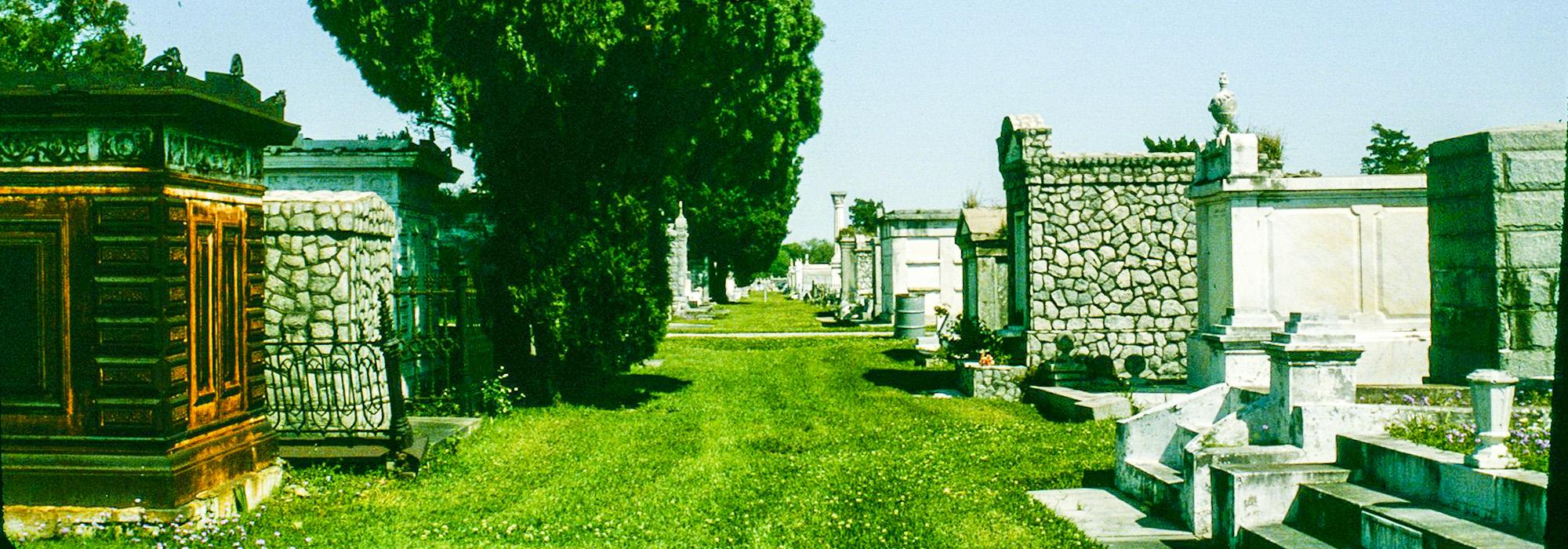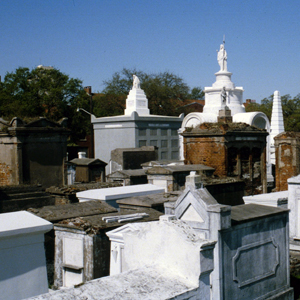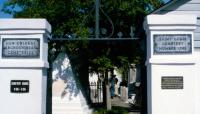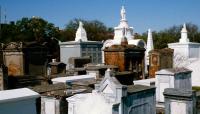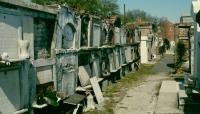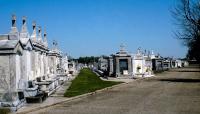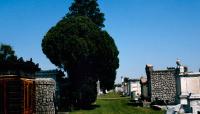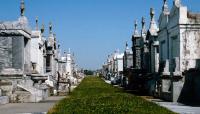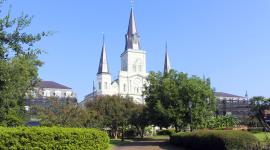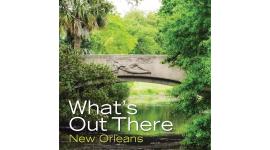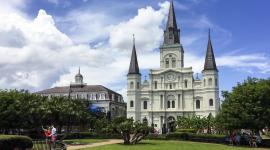An aggregate of three Catholic cemeteries located near the Vieux Carré, St. Louis Cemetery contains above-ground vaults derived from French and Spanish burial traditions. The first cemetery site, founded in 1789, is located on Basin Street in an area once known as Storyville. Comprising one square block, it holds over 100,000 burials and is the oldest extant cemetery in the city. It is laid out in densely-packed rows with vaults of varying heights and materials, with a whitewashed wall enclosing the entire block.
To meet the demands of numerous disease epidemics, an extension was made in 1823 three blocks away, on a three-block parcel on Claiborne Avenue. More spacious than the older cemetery, there is some green lawn and ornate wrought iron fencing around freestanding vaults, with vaults stacked three-high to form an enclosure around the space. The architect Jacques Nicholas Bussiere de Pouilly, who heavily influenced the cemetery designs, is buried there.
Two miles from the Vieux Carré on Esplanade Avenue is the third St. Louis Cemetery. Founded in 1854 atop a former leper colony, it was known initially as Bayou Cemetery. It is the largest and most regular of the three burial grounds, with long rows of vaults divided by lawn and two-way roads. It is recognized for its elaborate marble crypts and Greek Orthodox section, and is still in use today. All three cemeteries are mostly devoid of trees or other structures. The first two cemeteries were listed in the National Register of Historic Places in 1975.



